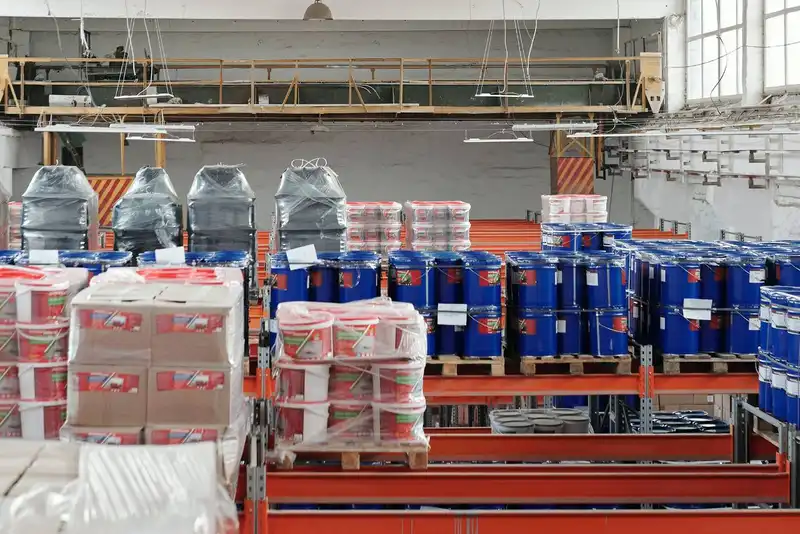Warehouse Inventory Management - 7 Tips for Success
What is Warehouse Inventory?

Warehouse inventory is defined as all goods that a company sells or plans to sell to consumers. Items in warehouse inventory can be categorized into 4 different types.
- Products - These are ideas, information, services, physical objects, or methods that a business created to satisfy a need. These goods will often have tangible and intangible functions and features.
- Raw Materials - These are supplies and unfinished materials that organizations will use in their manufacturing processes to create finished products.
- Work-in-Progress Goods - Often abbreviated to WIP, work-in-progress goods are items that are still in the production or manufacturing process.
- Finished Goods - These are items that are fully prepared or manufactured and are ready to be sold to consumers.
7 Tips for Warehouse Inventory Management

Warehouse inventory encompasses many different elements; therefore, a robust management system should be put in place to ensure that the stock is organized and that profitability is maintained.
Businesses that are looking to explore different strategies to improve their warehouse inventory management can implement these best practices.
1. Track Both Fixed and Movable Assets
Oftentimes, organizations will focus on monitoring their product's movement throughout the warehouse and supply chain. Although it is important to track movable inventory, management should also keep an eye on fixed warehouse assets. This includes machinery, equipment, furniture, and company vehicles.
By tracking fixed assets with labels or barcodes, businesses can organize their warehouse and manage multiple locations easily.
2. Assess Real Time Information

Having access to real time information regarding inventory movement will allow business teams to have full visibility into their supply chain and performance in the market.
Many organizations have been using modern inventory management software with order optimization capabilities to receive the latest reports regarding their warehouse, incoming purchase orders, and supplier pricing.
With real time information, executives can make quick adjustments to their warehouse management system to meet customer needs and to protect their bottom line.
3. Track Best-Selling Products
Organizations should track their most popular and fast-moving products by assessing orders and sales data during a given period. By being equipped with this information, warehouse managers can improve their facility's layout to boost efficiency.
For example, it is recommended that high sellers are placed near order fulfillment areas in the warehouse to save employees time when they package orders.
Having insight into sales volume will also help executives determine the minimum and maximum inventory levels to prevent stock-outs and over-stocks, respectively. By keeping optimal quantities of products at all times, the business will be able to maximize its sales and avert unnecessary spending.
4. Monitor Employees

Along with inventory products, businesses should also monitor their employees and make sure that they are properly following warehouse procedures.
Integrating security systems and inventory solutions, such as barcode scanners that identify when a product was scanned and by which staff member, will enable management to track employee performance.
This can help highlight fast and productive workers and can also hold those accountable, in the case of inventory loss, damage, or inaccuracy.
5. Reorganize the Warehouse Floor Plan
Reorganizing the warehouse floor plan based on changes in consumer demand and production will enhance workflow efficiency.
As new products become more popular, management should store them inaccessible areas for warehouse employees to reach. Slower-moving goods should be swapped out and placed in the back of the facility. This will reduce order-picking time and ensure orders are shipped out promptly.
Warehouse managers should also consider saving ample room between different areas in the facility and have aisles designated for forklifts and machinery. This will give employees space to navigate the warehouse and will promote workplace safety.
6. Ensure Accuracy

In order to be cost-efficient and to operate a smooth-running operation, organizations must prioritize accuracy in inventory management. This can be done with the implementation of effective inventory ordering software.
These tools eliminate errors by automatically keeping a record of the quantities that were received by the business, as well as streamlining inventory tracking. Additionally, it prevents instances of over-ordering with its suggested ordering feature.
7. Embrace New Technology
Modern warehouse inventory management systems have advanced capabilities that will help businesses streamline their processes, such as shipping and distribution procedures.
The most common software features in an inventory system include spending reports and real time order management, to which executives can access this information remotely from their mobile phone or tablet.
By leveraging the use of new technology, businesses can effectively optimize their warehouse inventory management, improve their supply chain management, and gain a competitive advantage.






